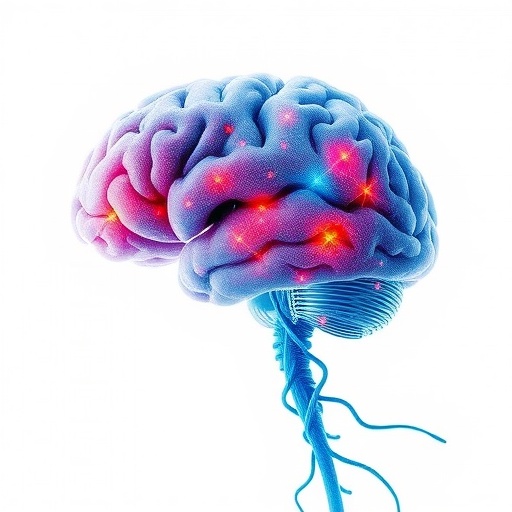The human brain stands as nature’s most intricate and powerful organ, a marvel sculpted through millions of years of evolution. Central to this evolutionary journey is the cerebral cortex, a region responsible for higher cognition, sensory perception, and complex behaviors. Although the expansion and complexity of the human cortex have long been appreciated, the genetic underpinnings driving these changes remain an elusive frontier. Recent groundbreaking research has uncovered how a tiny segment of DNA, unique to humans, orchestrates pivotal developmental processes, shedding light on the molecular choreography behind our brain’s exceptional capabilities.
At the heart of this discovery is a special class of genetic elements known as Human Accelerated Regions (HARs). These highly conserved sequences harbor human-specific mutations that have evolved rapidly since diverging from our common ancestors with other primates. Despite thousands of HARs being identified, their direct roles in brain development and the emergence of human-specific traits have largely been a mystery. Now, scientists led by Liu, Mosti, Zhao, and colleagues have illuminated the function of one such element: an enhancer named HARE5.
Enhancers are segments of DNA that regulate the expression of genes at precise times and places, acting as genetic switches that modulate developmental programs. HARE5 specifically influences the gene Frizzled8, a WNT signaling receptor integral to brain development. WNT signaling pathways regulate cell proliferation, differentiation, and fate decisions — processes crucial for the formation of the cerebral cortex. The research team harnessed cutting-edge genome editing technologies to insert the human version of HARE5 into mice and primates, creating precise models to probe how this enhancer affects brain development.
Remarkably, mice engineered to carry the human HARE5 genomic sequence exhibited significantly enlarged neocortices compared to their unmodified counterparts. This increase was not superficial; the neocortex contained a greater number of excitatory neurons, which play a key role in establishing cortical circuits responsible for processing information. The neuroanatomical changes were complemented by functional modifications: in vivo neural imaging revealed heightened functional independence among cortical regions, suggesting that structural changes had tangible effects on brain network dynamics.
To decode the mechanisms behind these changes, the researchers employed a comprehensive suite of developmental biology approaches, including fixed tissue analyses, live imaging of neural progenitor cells, lineage tracing, and single-cell transcriptomics. These experiments unveiled that human HARE5 fine-tunes the behavior of radial glial cells — the principal neural progenitors during corticogenesis. Early in brain development, human HARE5 promoted enhanced self-renewal of these radial glia, expanding the progenitor pool. Subsequently, these cells demonstrated increased neurogenic potential, leading to the generation of more neurons.
Moving beyond in vivo models, the team also used genome editing to introduce human-specific mutations into neural progenitor cells and cortical organoids derived from chimpanzees and humans. They identified four key nucleotide substitutions within HARE5 that boost enhancer activity, directly increasing progenitor proliferation rates. This discovery highlights how minute changes in non-coding DNA sequences can exert profound control over cellular behaviors central to brain formation.
Further molecular interrogation revealed that human HARE5’s effects are mediated through amplification of canonical WNT signaling. By elevating the activity of this pivotal pathway, HARE5 enhances progenitor cell proliferation and sustains an environment conducive to cortical expansion. This mechanistic insight connects the dots between small genomic changes and the emergence of human-specific neurodevelopmental features, illustrating a direct regulatory axis from DNA sequence to brain architecture.
The study thus propels our understanding of human brain evolution into a new era, demonstrating that regulatory DNA elements — previously considered “junk” or functionally ambiguous — are in fact critical drivers of neurodevelopmental complexity. HARE5 exemplifies how evolutionary tinkering with enhancers can recalibrate fundamental developmental processes, leading to anatomical and functional innovations that underpin human cognition.
Given the burgeoning interest in HARs and their potential implications for neurological disorders, this research opens exciting avenues for future investigations. Understanding how human-specific regulatory sequences shape brain development not only elucidates our evolutionary history but may also yield insights into conditions linked to cortical malformation or dysfunction, including autism and schizophrenia.
Moreover, the integration of diverse model systems — spanning mice, primates, and organoid cultures — demonstrates the power of interdisciplinary approaches in unraveling complex biological questions. Such synergy enables scientists to capture both evolutionary context and mechanistic detail, bringing us closer to a holistic understanding of what makes the human brain unique.
As genomic editing tools continue to advance, the capacity to dissect the functional contributions of individual HARs and other regulatory elements will expand, promising to chart an increasingly detailed map of the genomic architecture underlying human brain development. This landmark study by Liu and colleagues thus not only identifies a key genetic switch fine-tuning radial glial potency and corticogenesis but also establishes a methodological framework for probing the molecular roots of human cognition.
In sum, the identification of HARE5 as a human-specific enhancer modulating radial glia behavior reshapes the narrative of brain evolution. It underscores how subtle genetic modifications can have cascading effects on developmental trajectories, ultimately fostering the immense structure and sophistication of the human cerebral cortex. This revelation both anticipates and inspires a future where the genetic basis of our intellect and identity is comprehensively decoded.
Subject of Research: Human-specific regulatory DNA sequences and their role in cerebral cortex development.
Article Title: A human-specific enhancer fine-tunes radial glia potency and corticogenesis.
Article References:
Liu, J., Mosti, F., Zhao, H.T. et al. A human-specific enhancer fine-tunes radial glia potency and corticogenesis. Nature (2025). https://doi.org/10.1038/s41586-025-09002-1
Image Credits: AI Generated
Tags: cerebral cortex evolutioncognitive abilities and brain structuredevelopmental biology of the human brainDNA mutations in humansenhancers and gene regulationgenetic underpinnings of cognitionHuman Accelerated Regionshuman brain developmenthuman-specific genetic elementsmolecular mechanisms of brain evolutionprimate evolution and brain complexityunique traits in human evolution





